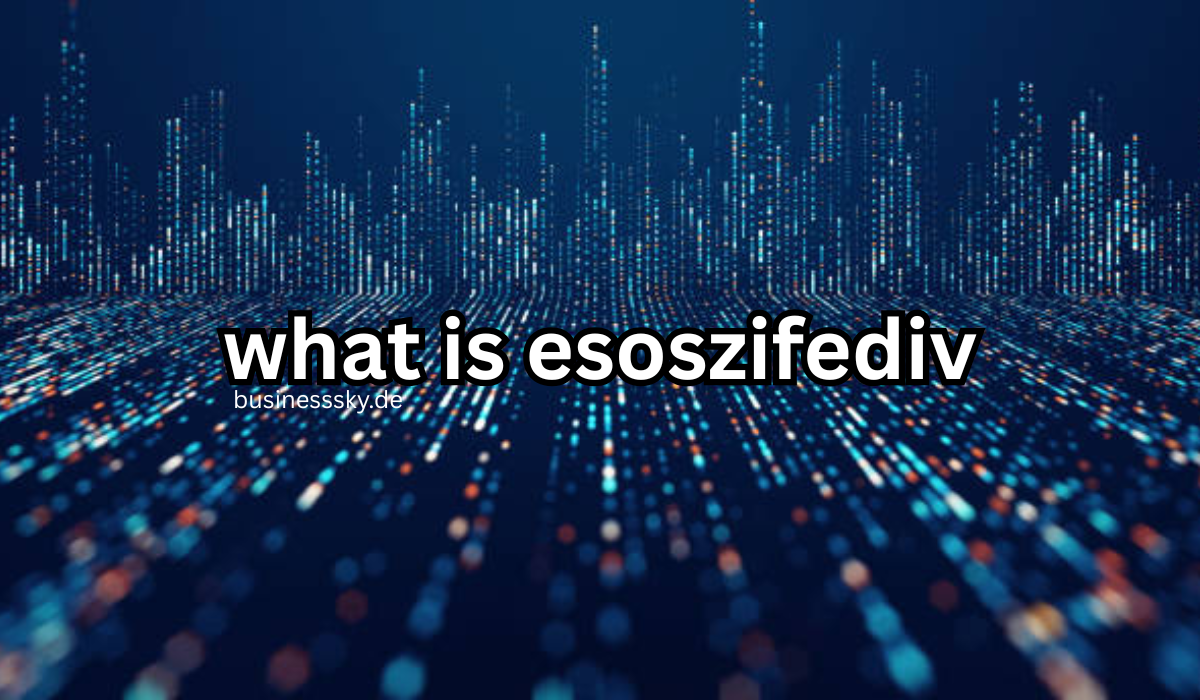Discover the meaning, applications, and significance of What Is Esoszifediv in modern industries. Learn about its origins, uses, and future prospects in this in-depth article.
Introduction
In the rapidly evolving landscape of science and technology, new terms and compounds frequently emerge, sparking curiosity and debate. One such term that has recently gained attention is What Is Esoszifediv. Despite its growing presence in online discussions and niche publications, many remain unfamiliar with its meaning and significance.
Esoszifediv is a term that refers to a compound or concept that has recently surfaced in various scientific and technical contexts. While its exact nature remains somewhat ambiguous, it is believed to be associated with advanced data processing frameworks and adaptive systems.
Understanding What Is Esoszifediv?
What Does Esoszifediv Mean?
The term “Esoszifediv” appears to be a neologism or a specialized term used within certain scientific or technical communities. It is not widely recognized in mainstream scientific literature, which adds to its enigmatic nature.
Origins and Etymology
The etymology of “Esoszifediv” is unclear, and it does not correspond to any known Latin or Greek roots commonly used in scientific nomenclature. This suggests that it may be a coined term, possibly an acronym or a proprietary name used in specific research or industrial contexts.
Applications of What Is Esoszifediv
In Data Processing and Adaptive Systems
Esoszifediv has been associated with adaptive data management and processing systems. Unlike traditional linear processing methods, systems incorporating Esoszifediv principles are designed to adjust dynamically based on specific task requirements, enhancing efficiency and responsiveness
Potential Industrial Uses
While concrete applications are still emerging, the adaptive nature of Esoszifediv-based systems suggests potential uses in industries requiring real-time data analysis and decision-making, such as finance, healthcare, and logistics.
Characteristics of Esoszifediv Systems
Adaptive Data Management
At its core, Esoszifediv represents a shift towards systems that can learn and adapt, optimizing their processes in response to changing inputs and environments. This adaptability is crucial in managing complex and voluminous data sets efficiently.
Enhanced Resilience and Flexibility
Esoszifediv systems are designed to maintain functionality even when faced with unexpected inputs or system failures. This resilience makes them particularly valuable in critical applications where uptime and reliability are paramount.

Comparing What Is Esoszifediv to Traditional Systems
| Feature | Traditional Systems | Esoszifediv Systems |
|---|---|---|
| Processing Approach | Linear | Adaptive |
| Error Handling | Rigid | Flexible |
| Scalability | Limited | High |
| Real-Time Analysis | Basic | Advanced |
| System Resilience | Moderate | High |
The table above highlights the key differences between traditional data processing systems and those incorporating Esoszifediv principles, emphasizing the latter’s advantages in adaptability and resilience.
Challenges and Considerations
Implementation Complexity
Integrating What Is Esoszifediv principles into existing systems may require significant changes in infrastructure and processes, posing challenges in terms of cost and technical expertise.
Security and Compliance
As with any advanced system, ensuring that Esoszifediv-based applications meet security standards and comply with relevant regulations is essential, particularly in industries handling sensitive data.
Future Prospects
Integration with Artificial Intelligence
The adaptive nature of Esoszifediv systems aligns well with artificial intelligence technologies. Future developments may see deeper integration, leading to more intelligent and autonomous systems capable of complex decision-making.
Industry-Specific Applications
As understanding and development of Esoszifediv systems progress, tailored applications for specific industries are likely to emerge, addressing unique challenges and requirements in sectors like healthcare, finance, and manufacturing.
Practical Tips for Organizations
-
Assess Readiness: Evaluate your organization’s infrastructure to determine readiness for integrating adaptive systems.
-
Pilot Programs: Start with small-scale pilot programs to test the effectiveness of Esoszifediv principles in your operations.
-
Training: Invest in training for staff to ensure they are equipped to work with new adaptive systems.
-
Security Measures: Implement robust security protocols to protect adaptive systems from potential threats.
![]()
Conclusion
What Is Esoszifediv represents a forward-thinking approach to data processing, emphasizing adaptability, resilience, and efficiency. While still an emerging concept, its potential applications across various industries are vast. Organizations looking to stay ahead in the digital age should consider exploring Esoszifediv principles to enhance their data management and processing capabilities.
Frequently Asked Questions (FAQs)
Q1: Is Esoszifediv a software or a concept?
A1: Esoszifediv is primarily a concept that refers to adaptive data processing frameworks. It may be implemented through specific software solutions.
Q2: Can Esoszifediv systems be integrated into existing infrastructure?
A2: Yes, but integration may require significant modifications to existing systems to accommodate the adaptive nature of Esoszifediv principles.
Q3: What industries can benefit most from Esoszifediv systems?
A3: Industries that handle large volumes of data and require real-time analysis, such as finance, healthcare, and logistics, can benefit significantly.
Q4: Are there any known security risks associated with Esoszifediv systems?
A4: Like any advanced system, Esoszifediv-based applications must be designed with robust security measures to mitigate potential risks.
Q5: Is there any open-source software implementing Esoszifediv principles?
A5: As the concept is still emerging, open-source implementations may be limited, but interest in developing such solutions is growing.





